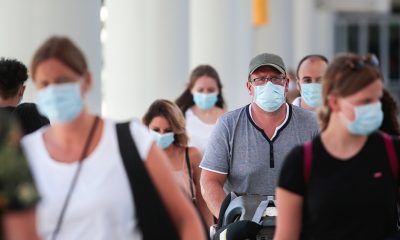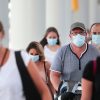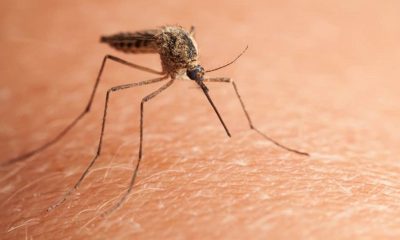Covid-19
Flu vs. Coronavirus: Bay Area doctor debunks Trump’s claim that COVID-19 is as deadly as the flu
A Bay Area doctor emphasized the seriousness of the novel coronavirus on Tuesday following a Facebook post that was removed from President Trump in which he falsely claimed that COVID-19 is less deadly than the seasonal flu.
According to the Center for Disease and Prevention (CDC), the flu and COVID-19 are both contagious respiratory illnesses but are caused by different viruses.
On ABC7 News at 3 p.m., on Tuesday UCSF epidemiologist Dr. George Rutherford debunked the president’s claim saying the novel coronavirus is “substantially more lethal than the flu.” So what’s the difference between the two? Here’s what we found out:
How do COVID-19 and influenza compare numbers-wise?
Dr. Rutherford says on a “real bad” influenza year, the U.S. may see “tens of thousands of deaths.” The CDC estimates a yearly 21,000 to 66,000 deaths. By comparison, COVID-19 has caused hundreds of thousands of deaths within the past eight months. On Monday, the U.S. passed 210,000 novel coronavirus related deaths, according to data from Johns Hopkins University.
“So if this (COVID-19) is substantially more lethal than influenza, it’s something that we need to take very, very seriously,” Rutherford added.
How do symptoms between the two compare?
According to the CDC, both COVID-19 and flu can have varying degrees of symptoms, ranging from no signs(asymptomatic) to severe signs. Common symptoms that COVID-19 and flu share include:
-
- Fever or feeling feverish/chills
- Cough
- Shortness of breath or difficulty breathing
- Fatigue
- Sore throat
- Runny or stuffy nose
- Muscle pain or body aches
- Headache
- Some people may have vomiting and diarrhea, though this is more common in children than adults
Though the two illnesses share similar symptoms, the CDC adds that “COVID-19 seems to cause more serious illnesses in some people. Other signs and symptoms of COVID-19, different from flu, may include change in or loss of taste or smell.”
Who’s at highest risk for both illnesses?
Older adults, people with certain underlying medical conditions and pregnant people are all at greater risk for both the flu and COVID-19, the CDC says.
Young children are at higher risk of severe illness from the flu and school-aged children infected with COVID-19 are at higher risk of Multisystem Inflammatory Syndrome in Children (MIS-C), a rare but severe complication of COVID-19.
What complications can COVID-19 and the Flu bring?
According to the CDC, both illnesses can result in the following complications :
-
- Pneumonia
- Respiratory failure
- Acute respiratory distress syndrome (i.e. fluid in lungs)
- Sepsis
- Cardiac injury (e.g. heart attacks and stroke)
- Multiple-organ failure (respiratory failure, kidney failure, shock)
- Worsening of chronic medical conditions (involving the lungs, heart, nervous system or diabetes)
- Inflammation of the heart, brain or muscle tissues
- Secondary bacterial infections (i.e. infections that occur in people who have already been infected with flu or COVID-19)
In addition, COVID-19 can also cause blood clots in the veins and arteries of the lungs, heart, legs or brain or MIS-C in children, the CDC says.
Is there anything you can do to help your immunity?
The CDC says there are several FDA-licenced influenza vaccines produced yearly against three to four viruses that scientist predict will circulate each year. However, there is no vaccine for the novel coronavirus yet. That’s why Dr. George Rutherford says, “What will help your immunity is not to get it. That’s number one on your on your list and that means wearing masks, social socially distancing yourself from others, and being careful when you go into indoor environments.”
His next advice for boosting your immunity is to get vaccinated for the flu at the first opportunity you have.
Are you immune after you get COVID-19?
After returning to the White House from getting treated for COVID-19 at the Walter Reed Medical Center President Trump said “maybe I’m immune” in a video. Dr. Rutherford says it’s “probably a little fast for him to develop the kinds of antibodies” called neutralizing antibodies.
He adds, “We really don’t know. And there have now been five cases of reinforced clear cases of reinfection. Somebody gets infected a second time. And those are usually somewhere between three and five months after your initial infection.”






















